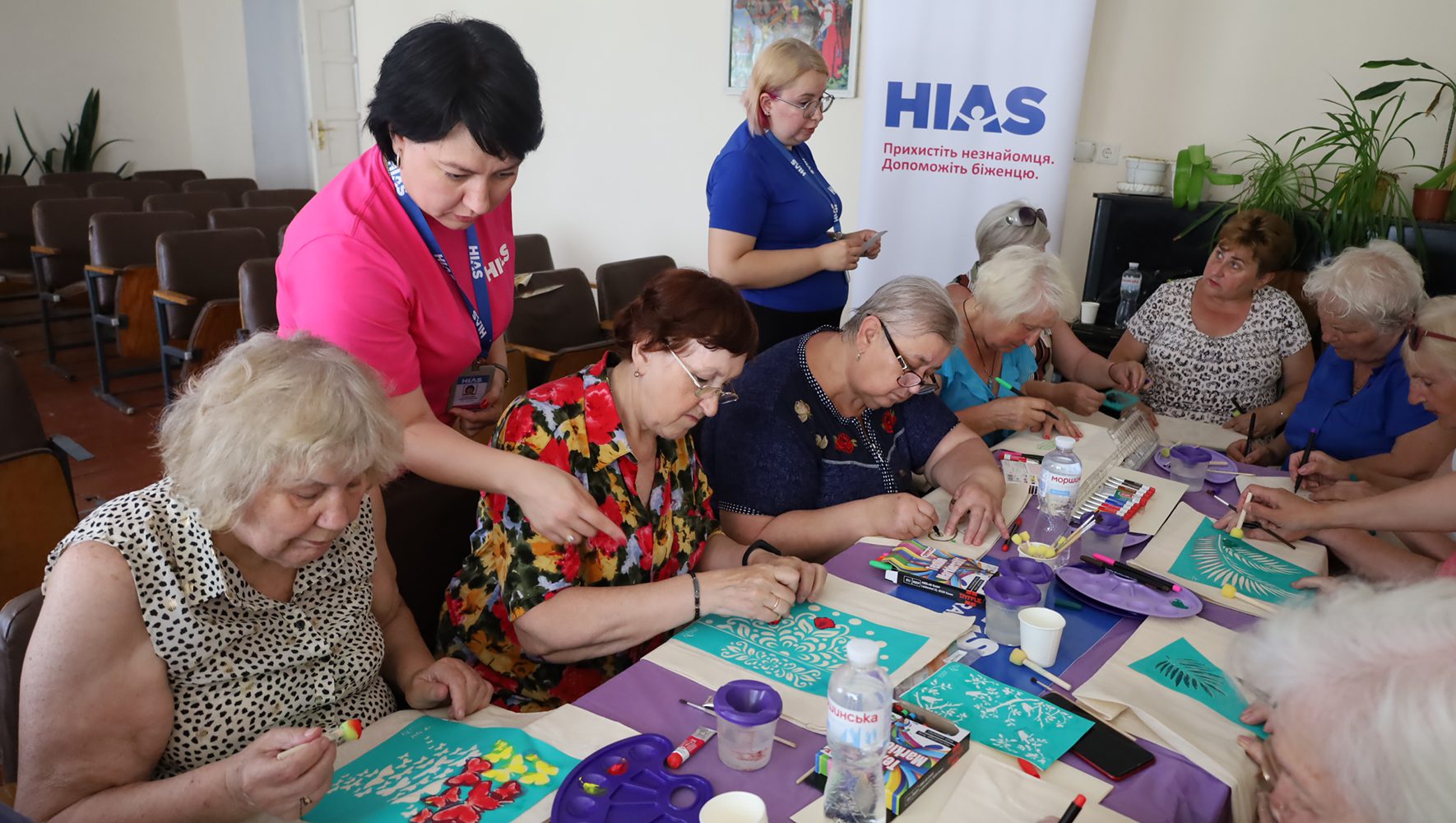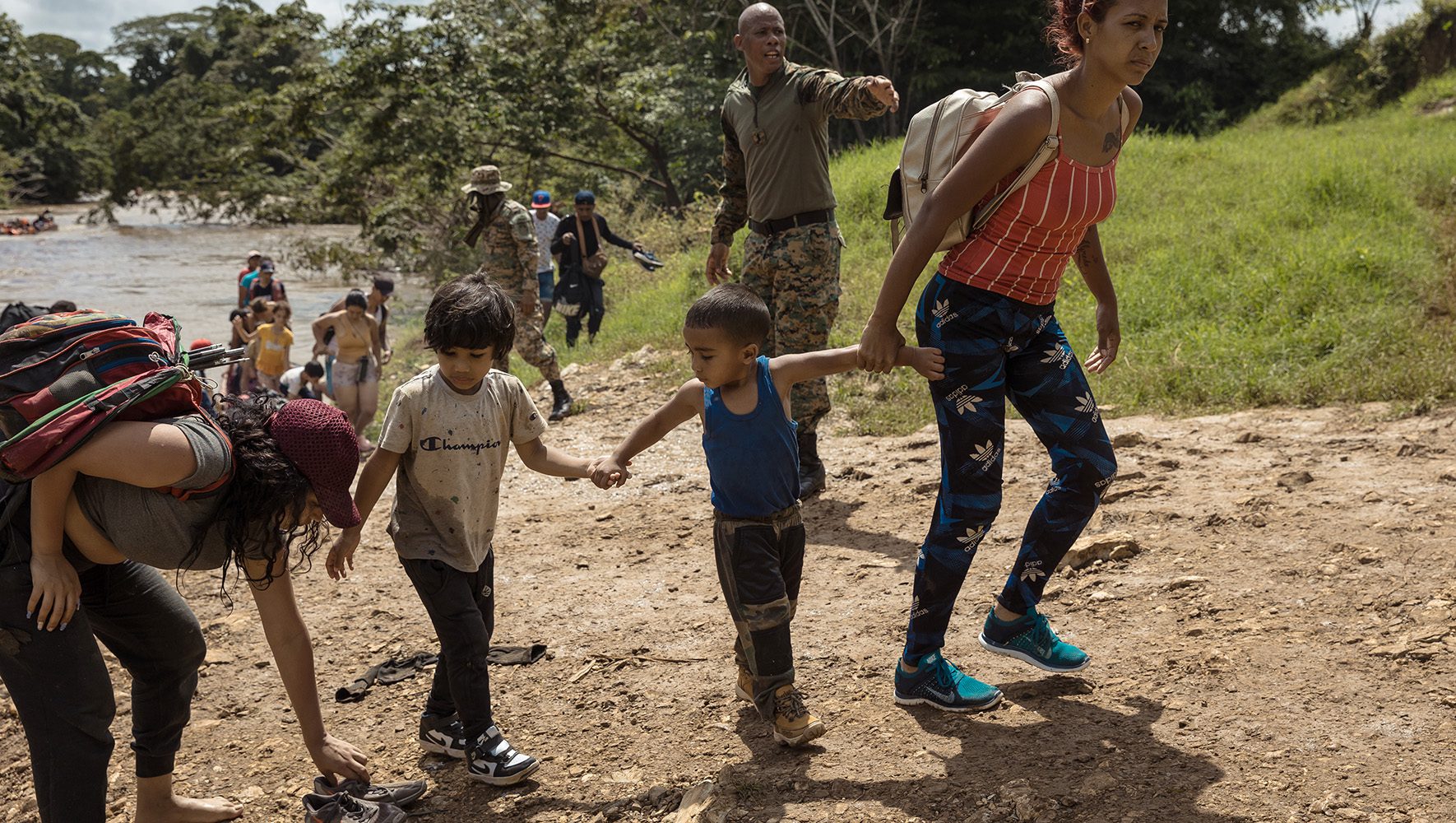
Women participate in a mental health support activity as part of a gender-based violence (GBV) prevention program in Chernivtsi, Ukraine, on July 8, 2023. (Mykyta Turik/HIAS)
Hester Moore joined HIAS this year as the new director of gender and gender-based violence (GBV) programs, where they will leverage their experience in legal, protection, and advocacy programming for refugee communities in international contexts. Moore is a leading voice on community-based protection interventions in areas of GBV, inclusive policy, and the empowerment of queer voices in global humanitarian and development spaces.
Moore recently spoke with HIAS.org about her work.
What challenges — resources, communications, discrimination, or something else — are important for the GBV space right now?
I don’t believe there has ever been so much urgency around the work that we do than there is today. The world is overwhelmed by crises — the conflict in Gaza and Israel is the latest piece of a jigsaw of forced displacement that enfolds Sudan, Ukraine, the Democratic Republic of Congo, Ethiopia, Latin America, Uganda, and more. As each new crisis emerges, existing ones seem to be dangerously eclipsed.
Needs on the ground are vastly under-serviced. Gender ideologies in political institutions across Europe and Latin America mean that anti-LGBTQ+ rhetoric increasingly weaponizes fear and stigma against sexual and gender minorities, further compounding ideas about who belongs and who doesn’t. Trans women in Latin America have a lower life expectancy, possibly as low as 35 years, than other women. Almost half of all women in Europe have suffered psychological violence from an intimate partner, and 80% of the millions of women who experience GBV do not seek professional help. More than 690,000 menstruating women and adolescent girls in Gaza have limited access to menstrual hygiene supplies.
"Gender oppression is fundamentally linked to a wider exploitation of people that happens in society."
We need a strong, unified voice from all political institutions, legal bodies, social and community movements, influencers, and decision makers. At a time of increased violence and rhetoric, we must address the common threads of xenophobia, racism, the weight of biases, and the persistent influence of patriarchal structures and oppression. Gender oppression is fundamentally linked to a wider exploitation of people that happens in society. When we recognize the links between these conflicts, we create the possibility for collective action against all forms of violence. HIAS’ global work around gender and GBV seeks to strengthen and solidify these common bonds — we work in solidarity with communities, local organizations, and displaced people. Our work of knowing what is happening in the complex puzzle of this world means acknowledging the struggles that occur parallel and adjacent to our own.
What are the things that HIAS does best in gender and GBV programming?
HIAS centers women, girls, LGBTQ+ people, and all people suffering from oppression linked to multiple intersecting identities. Violence against these groups is the most critical obstacle to the realization of their rights. Many humanitarian responses do not generally unpack the concept of gender beyond the binary, but at HIAS we recognize, celebrate, and center diverse gendered experiences. HIAS’ Technical Team on GBV is part of the broader fabric of our 23 country offices, and works to deliver high-impact, integrated programming that recognizes the complex and layered experiences of violence and oppression that the people we work with endure. I’m proud of the technical proficiency, agility, and dedication of the entire GBV team at HIAS.
"At HIAS we recognize, celebrate, and center diverse gendered experiences."
Our work around emergencies should be highlighted for its dynamism. In Ukraine, HIAS and our partner VOICE launched the Women’s and Girls Emergency Response Fund, so far empowering 29 local women-led organizations to address urgent community needs and combat GBV. And in Panama, HIAS’ cross-border initiative for those passing through the Darién Gap has provided an innovative GBV response, offering case management services as well as psychological first aid and legal support to survivors and individuals at risk of GBV. Our team is working in these complex scenarios of onward and mixed migration and has developed innovative protection responses to significant challenges.
How does localization play a part in GBV and LGBTQ+ programming?
The localization agenda is focused on increasing local actors’ access to international humanitarian funding, partnerships, coordination spaces, and capacity building. Localization is one key to upholding the rights of women and girls in emergencies, as local responses are often more relevant and effective than external ones. However, the response of the international community often ignores, minimizes, and sometimes actively undermines local capacities – especially those of women-led organizations. Coordination is disjointed among local, regional, and international actors, and the needs of women and girls are falling through the cracks.
"Localization is one key to upholding the rights of women and girls in emergencies, as local responses are often more relevant and effective than external ones. "
Our work and partnerships with women-led organizations and community-based organizations led by LGBTQ+ people (including refugee-led organizations) is a central part of our protection and localization strategy. Initiatives such as a specialized SOGIESC curriculum in Latin America and our work with LGBTQ+ communities in Kenya show why these organizations and groups are best positioned to build the solutions people urgently need.
Local groups are concerned about their capacity to continue supporting their primary caseload —vulnerable populations from their own country — in addition to those displaced by crisis. HIAS wants to fulfil commitments to localization by shifting power to these organizations, deepening our relationships with existing partnerships and identifying new ones, and ensuring access to multi-year and flexible funding allows the right voices to drive decision making, response, and planning.


